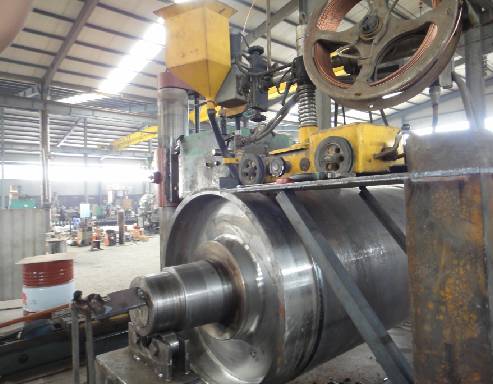 Afrikaans
Afrikaans  Albanian
Albanian  Amharic
Amharic  Arabic
Arabic  Armenian
Armenian  Azerbaijani
Azerbaijani  Basque
Basque  Belarusian
Belarusian  Bengali
Bengali  Bosnian
Bosnian  Bulgarian
Bulgarian  Catalan
Catalan  Cebuano
Cebuano  Corsican
Corsican  Croatian
Croatian  Czech
Czech  Danish
Danish  Dutch
Dutch  English
English  Esperanto
Esperanto  Estonian
Estonian  Finnish
Finnish  French
French  Frisian
Frisian  Galician
Galician  Georgian
Georgian  German
German  Greek
Greek  Gujarati
Gujarati  Haitian Creole
Haitian Creole  hausa
hausa  hawaiian
hawaiian  Hebrew
Hebrew  Hindi
Hindi  Miao
Miao  Hungarian
Hungarian  Icelandic
Icelandic  igbo
igbo  Indonesian
Indonesian  irish
irish  Italian
Italian  Japanese
Japanese  Javanese
Javanese  Kannada
Kannada  kazakh
kazakh  Khmer
Khmer  Rwandese
Rwandese  Korean
Korean  Kurdish
Kurdish  Kyrgyz
Kyrgyz  Lao
Lao  Latin
Latin  Latvian
Latvian  Lithuanian
Lithuanian  Luxembourgish
Luxembourgish  Macedonian
Macedonian  Malgashi
Malgashi  Malay
Malay  Malayalam
Malayalam  Maltese
Maltese  Maori
Maori  Marathi
Marathi  Mongolian
Mongolian  Myanmar
Myanmar  Nepali
Nepali  Norwegian
Norwegian  Norwegian
Norwegian  Occitan
Occitan  Pashto
Pashto  Persian
Persian  Polish
Polish  Portuguese
Portuguese  Punjabi
Punjabi  Romanian
Romanian  Russian
Russian  Samoan
Samoan  Scottish Gaelic
Scottish Gaelic  Serbian
Serbian  Sesotho
Sesotho  Shona
Shona  Sindhi
Sindhi  Sinhala
Sinhala  Slovak
Slovak  Slovenian
Slovenian  Somali
Somali  Spanish
Spanish  Sundanese
Sundanese  Swahili
Swahili  Swedish
Swedish  Tagalog
Tagalog  Tajik
Tajik  Tamil
Tamil  Tatar
Tatar  Telugu
Telugu  Thai
Thai  Turkish
Turkish  Turkmen
Turkmen  Ukrainian
Ukrainian  Urdu
Urdu  Uighur
Uighur  Uzbek
Uzbek  Vietnamese
Vietnamese  Welsh
Welsh  Bantu
Bantu  Yiddish
Yiddish  Yoruba
Yoruba  Zulu
Zulu Impact Idler Solutions for Enhanced Performance in Belt Conveyor Systems
Understanding Belt Conveyor Impact Idlers
Belt conveyors are an essential component in various industries, facilitating the efficient transport of bulk materials such as coal, minerals, and other aggregates. At the heart of these systems are impact idlers, which play a crucial role in enhancing the performance and longevity of conveyor belts. In this article, we will explore the function, types, and benefits of impact idlers in belt conveyor systems.
Function of Impact Idlers
Impact idlers are specifically designed to absorb the shock and impact that occurs when bulk materials are loaded onto the conveyor belt. These idlers are typically installed at loading points where heavy loads or large materials are deposited onto the belt. The primary function of impact idlers is to protect the belt and the supporting structure from damage caused by the sudden impact of heavy materials. A well-designed impact idler minimizes the potential for belt deformation, which could lead to tracking issues, increased wear, and ultimately, premature failure of the conveyor system.
Types of Impact Idlers
There are various designs of impact idlers, but they can generally be categorized into two main types traditional impact idlers and spring-mounted impact idlers
.1. Traditional Impact Idlers These consist of a series of rubber or polyurethane discs mounted on a roller support. The design allows the idler to flex and absorb impact energy, protecting the belt from direct contact with heavy loads. The discs also help to distribute the load evenly across the belt surface, reducing localized stress points that could lead to wear and tear.
2. Spring-mounted Impact Idlers These employ springs to provide additional shock absorption. The springs act to cushion the impact further, allowing for greater flexibility when dealing with heavier or more irregular loads. Spring-mounted idlers are particularly beneficial in operations where the load can vary greatly or when dealing with sharp-edged materials that could cause significant damage.
Benefits of Using Impact Idlers
belt conveyor impact idler

The incorporation of impact idlers into a belt conveyor system offers several significant benefits
1. Enhanced Durability By absorbing the shock of material impacts, impact idlers extend the lifespan of both the conveyor belts and the conveyor structure. This durability reduces maintenance costs and minimizes downtime associated with repairs.
2. Improved Safety Protecting the conveyor system from damage also contributes to workplace safety. Minimizing the risk of mechanical failure helps ensure that workers are less exposed to potentially hazardous situations.
3. Better Material Handling With a properly functioning impact idler system, the conveyor can handle heavier materials without the same level of wear and tear. This capability allows industries to increase their throughput without compromising quality or efficiency.
4. Cost Efficiency Investing in impact idlers can lead to significant cost savings over time. The reduction in maintenance and replacement costs, along with the increased operational efficiency of the conveyor system, makes impact idlers a smart financial choice.
5. Reduced Noise Levels Impact idlers can help diminish the noise generated during material loading. By cushioning the impact, they minimize the clashing sounds typically associated with the direct dropping of heavy materials, contributing to a quieter working environment.
Conclusion
Impact idlers are a vital component in the efficiency and longevity of belt conveyor systems. Their ability to absorb shocks and distribute the load effectively protects vital parts of the conveyor while enhancing safety and operational efficiency. As industries continue to demand higher throughput and greater reliability, the role of impact idlers becomes even more critical. Investing in the right impact idler design can provide substantial long-term benefits, ensuring smooth and efficient material handling processes.
-
Revolutionizing Conveyor Reliability with Advanced Rubber Lagging PulleysNewsJul.22,2025
-
Powering Precision and Durability with Expert Manufacturers of Conveyor ComponentsNewsJul.22,2025
-
Optimizing Conveyor Systems with Advanced Conveyor AccessoriesNewsJul.22,2025
-
Maximize Conveyor Efficiency with Quality Conveyor Idler PulleysNewsJul.22,2025
-
Future-Proof Your Conveyor System with High-Performance Polyurethane RollerNewsJul.22,2025
-
Driving Efficiency Forward with Quality Idlers and RollersNewsJul.22,2025





























